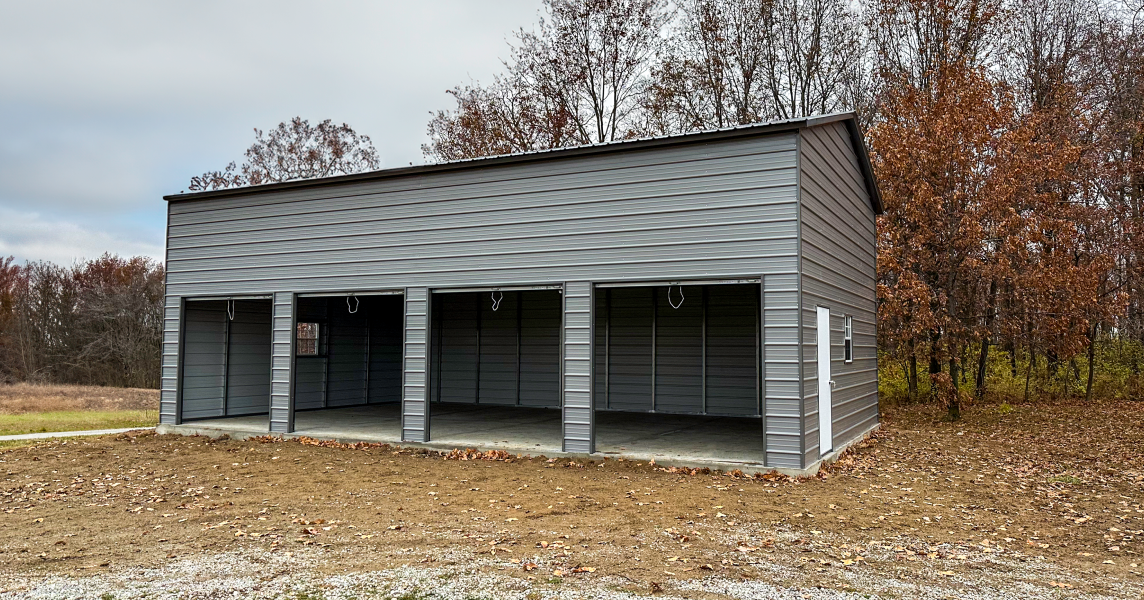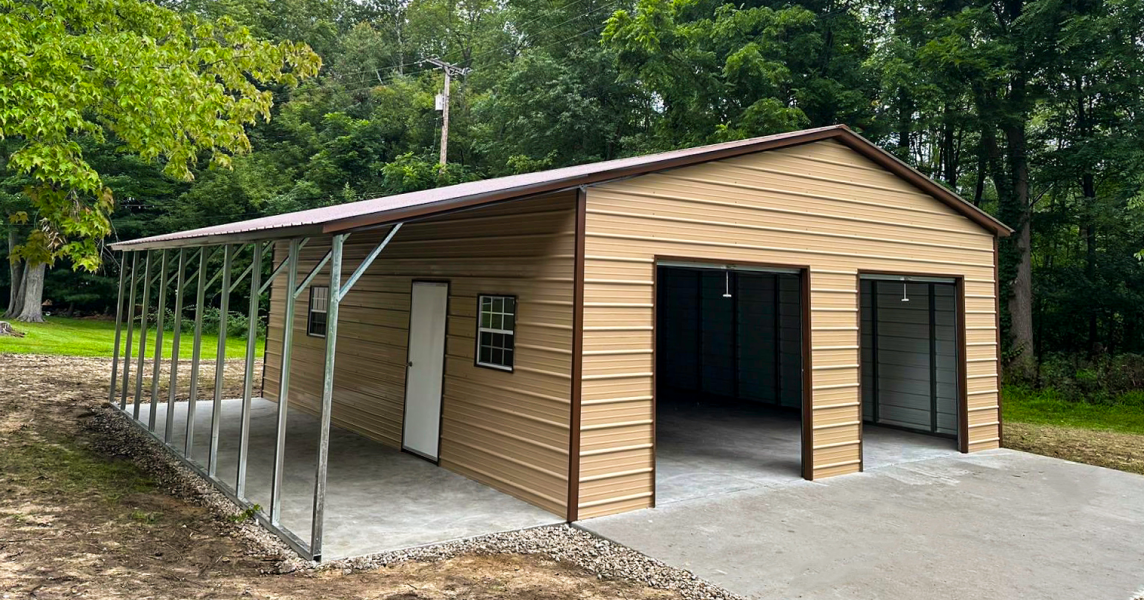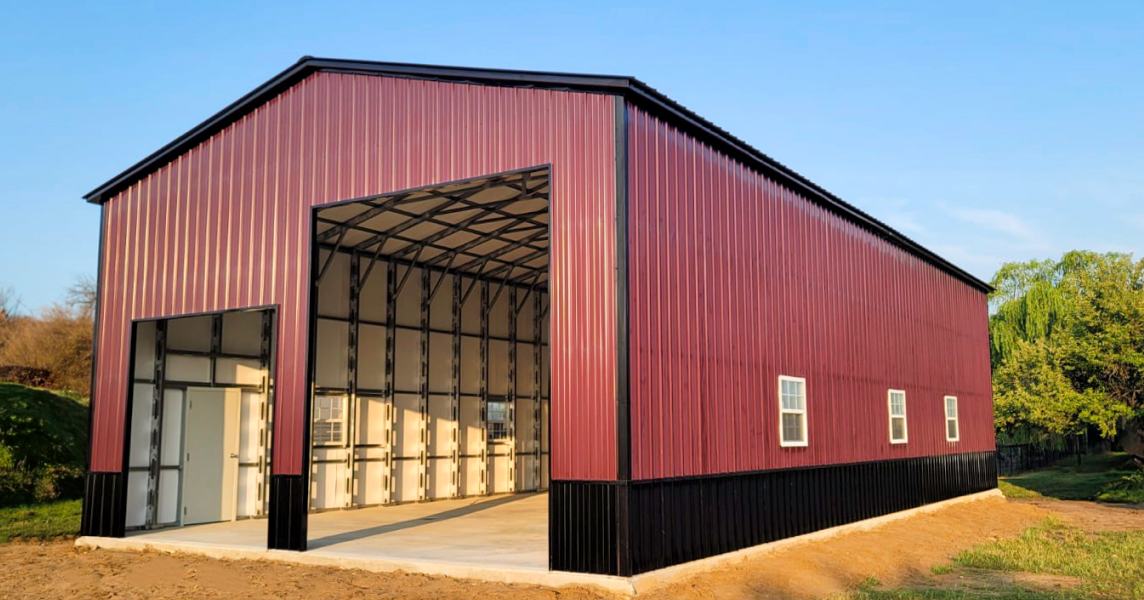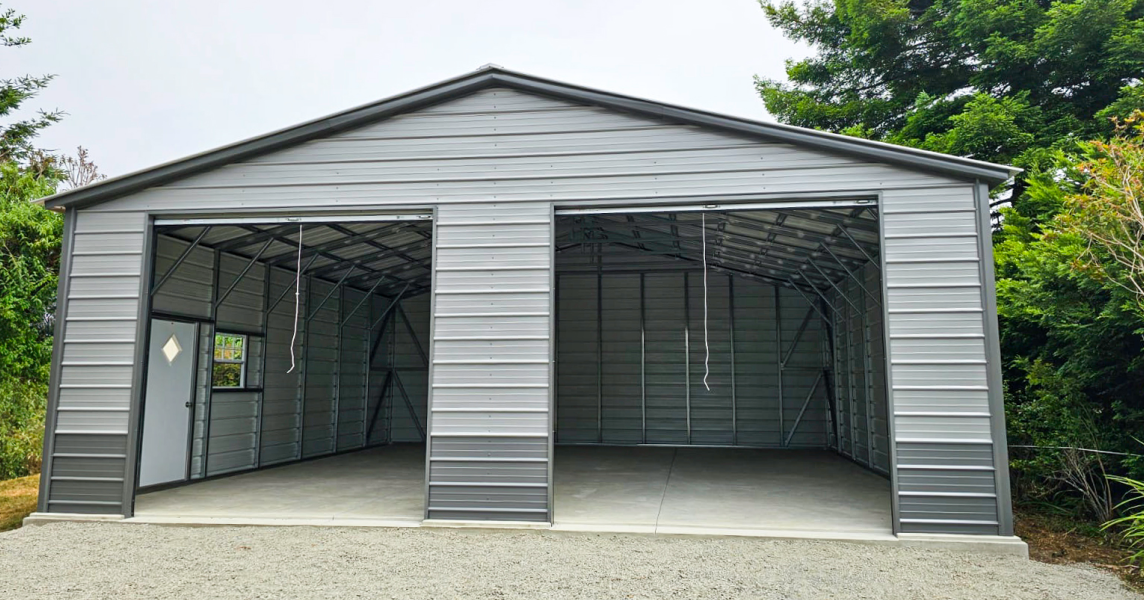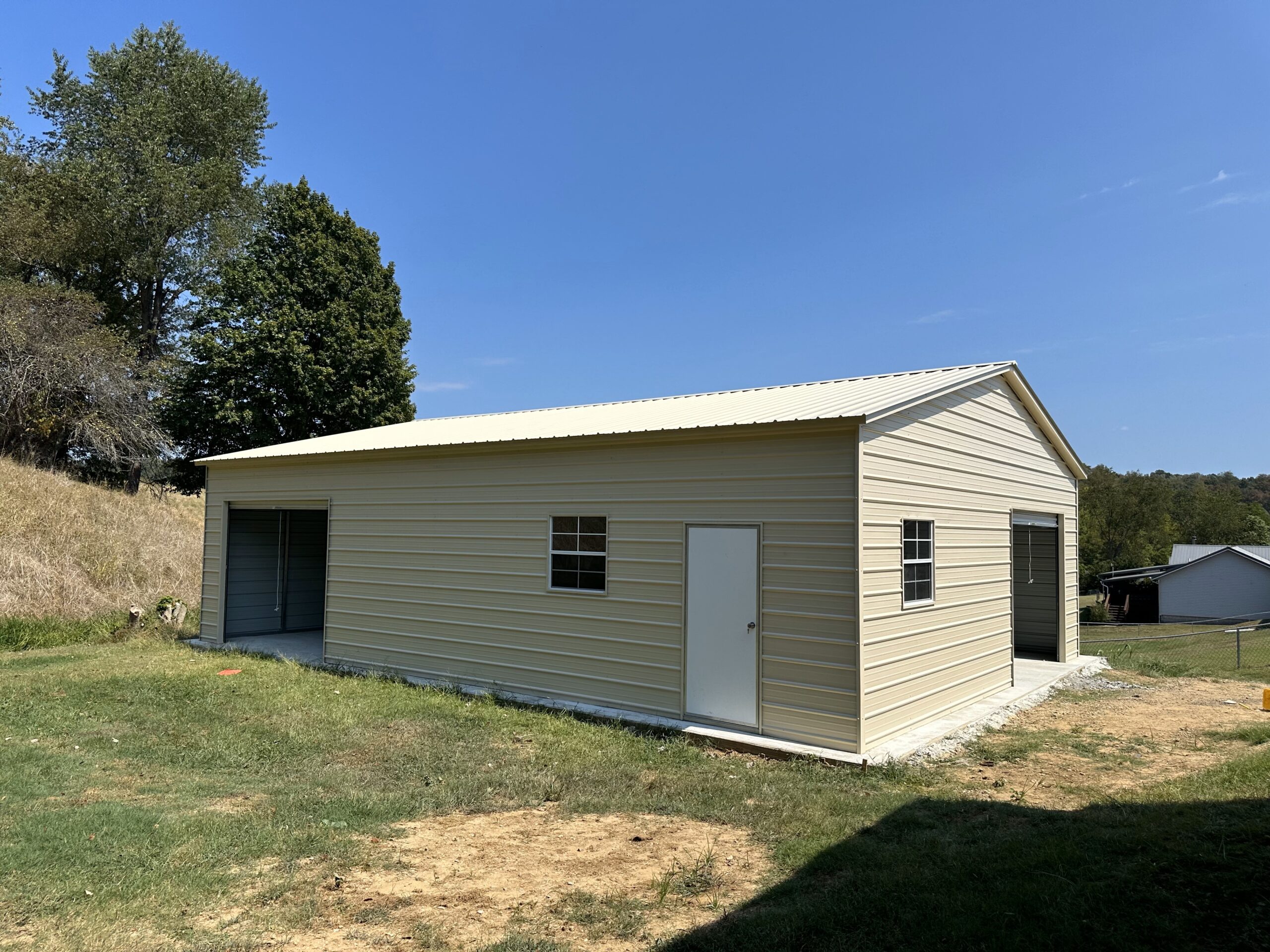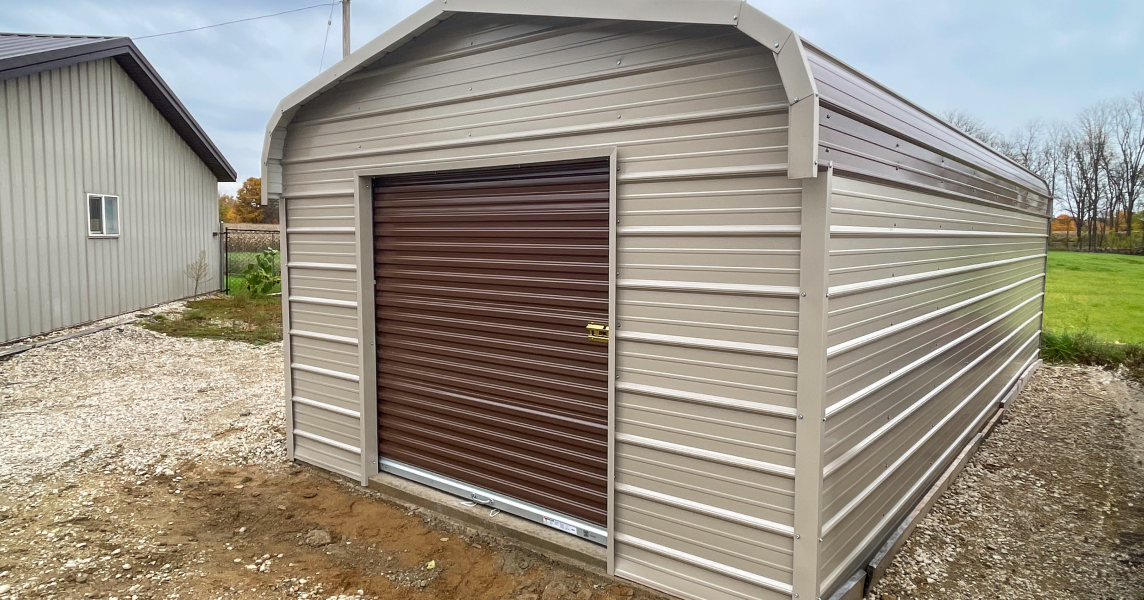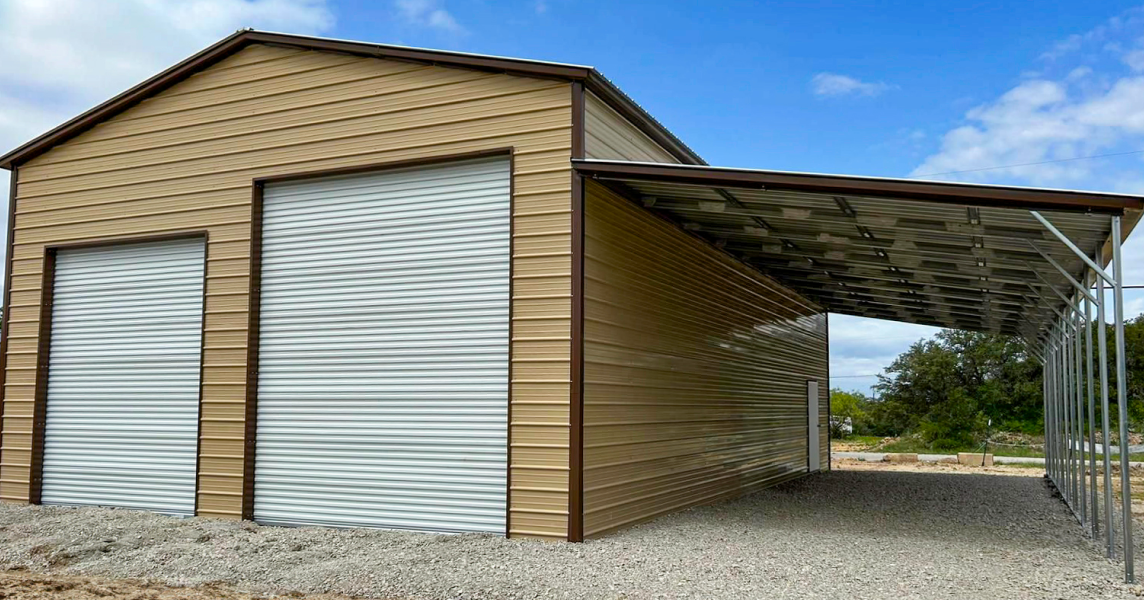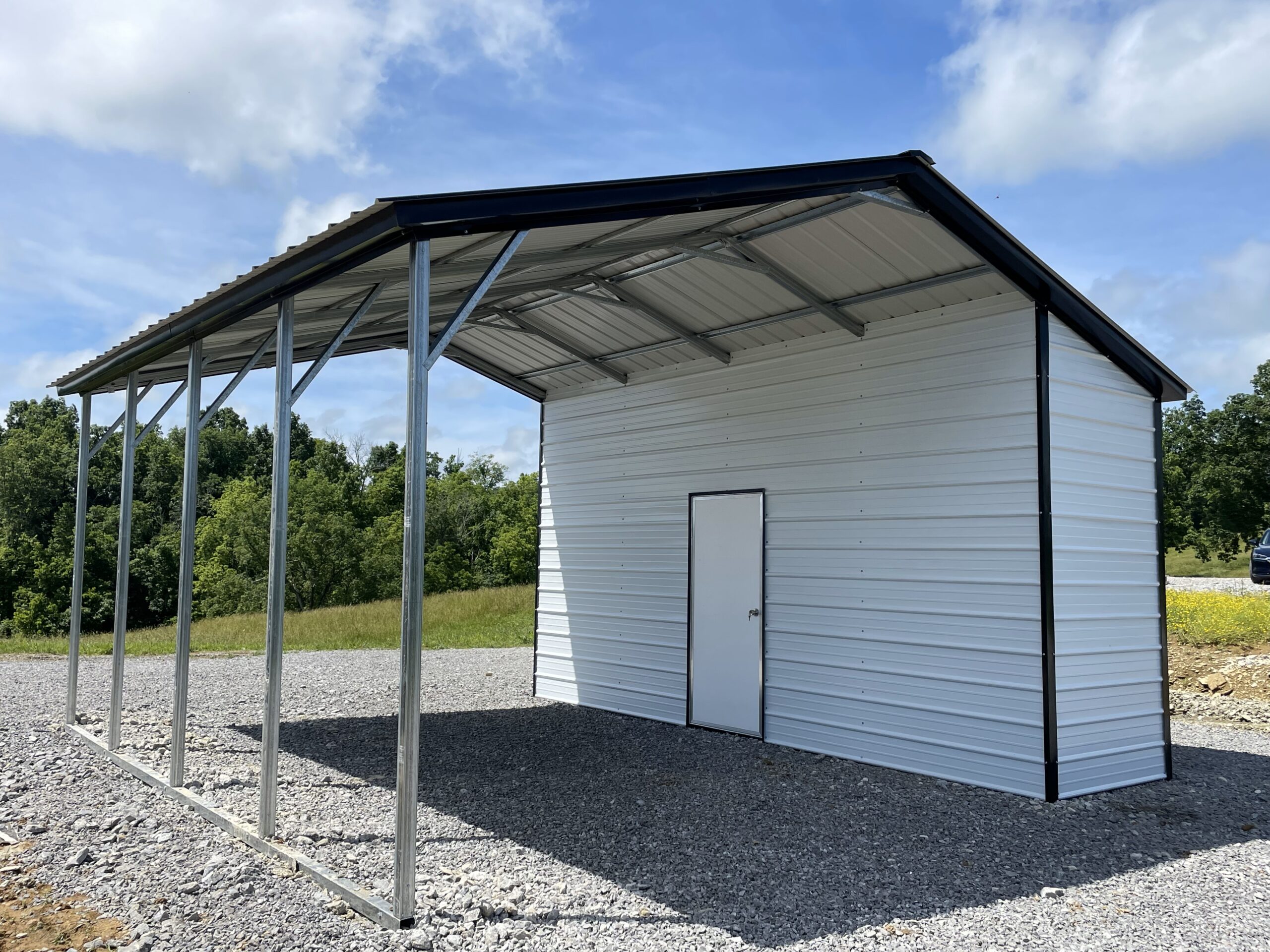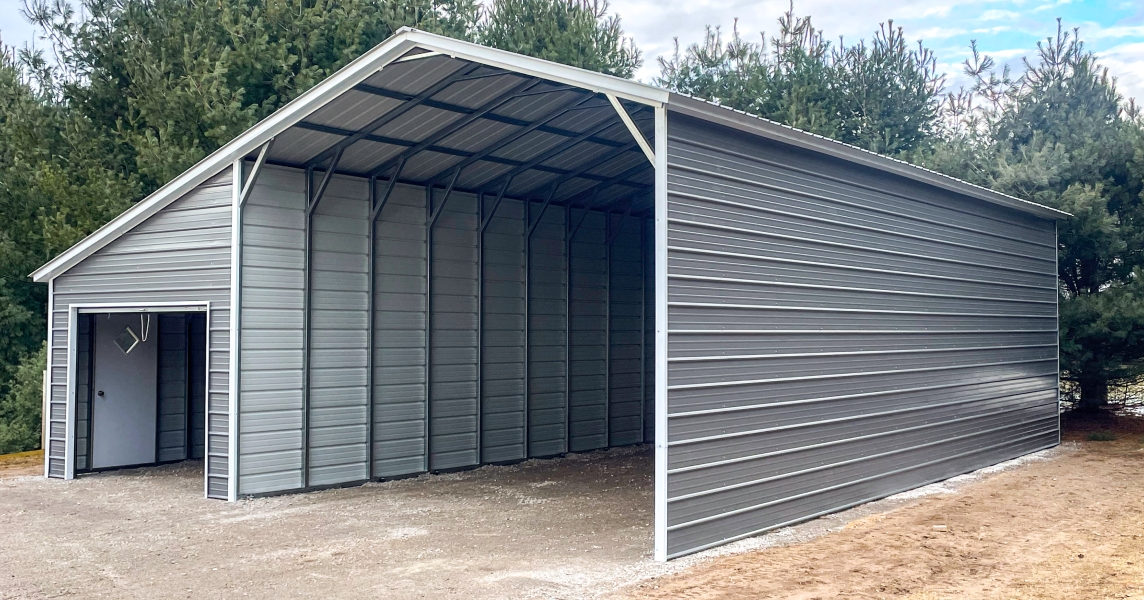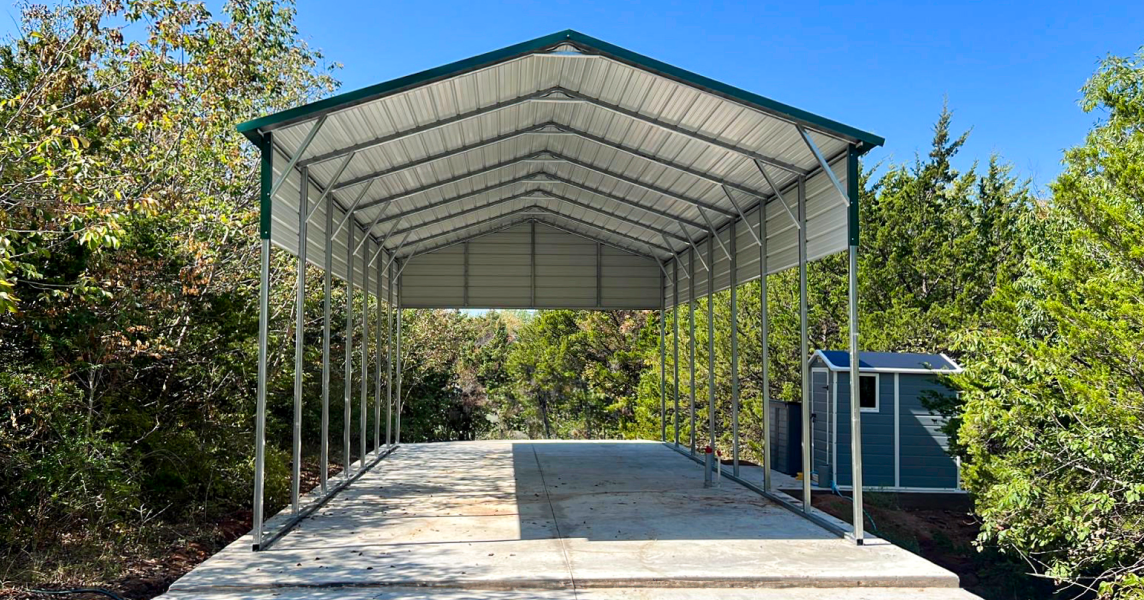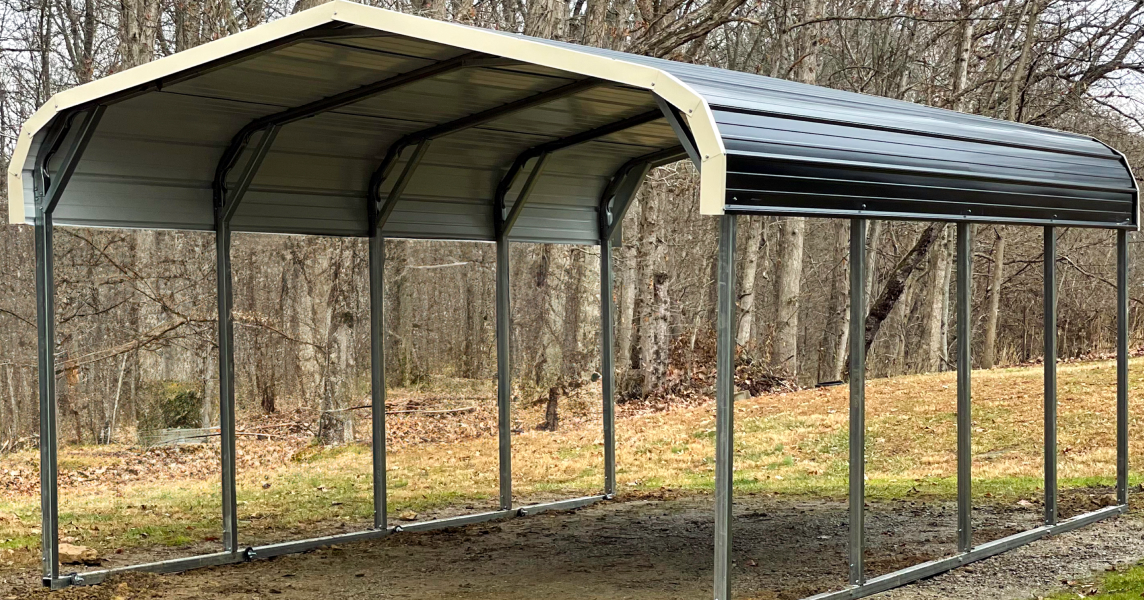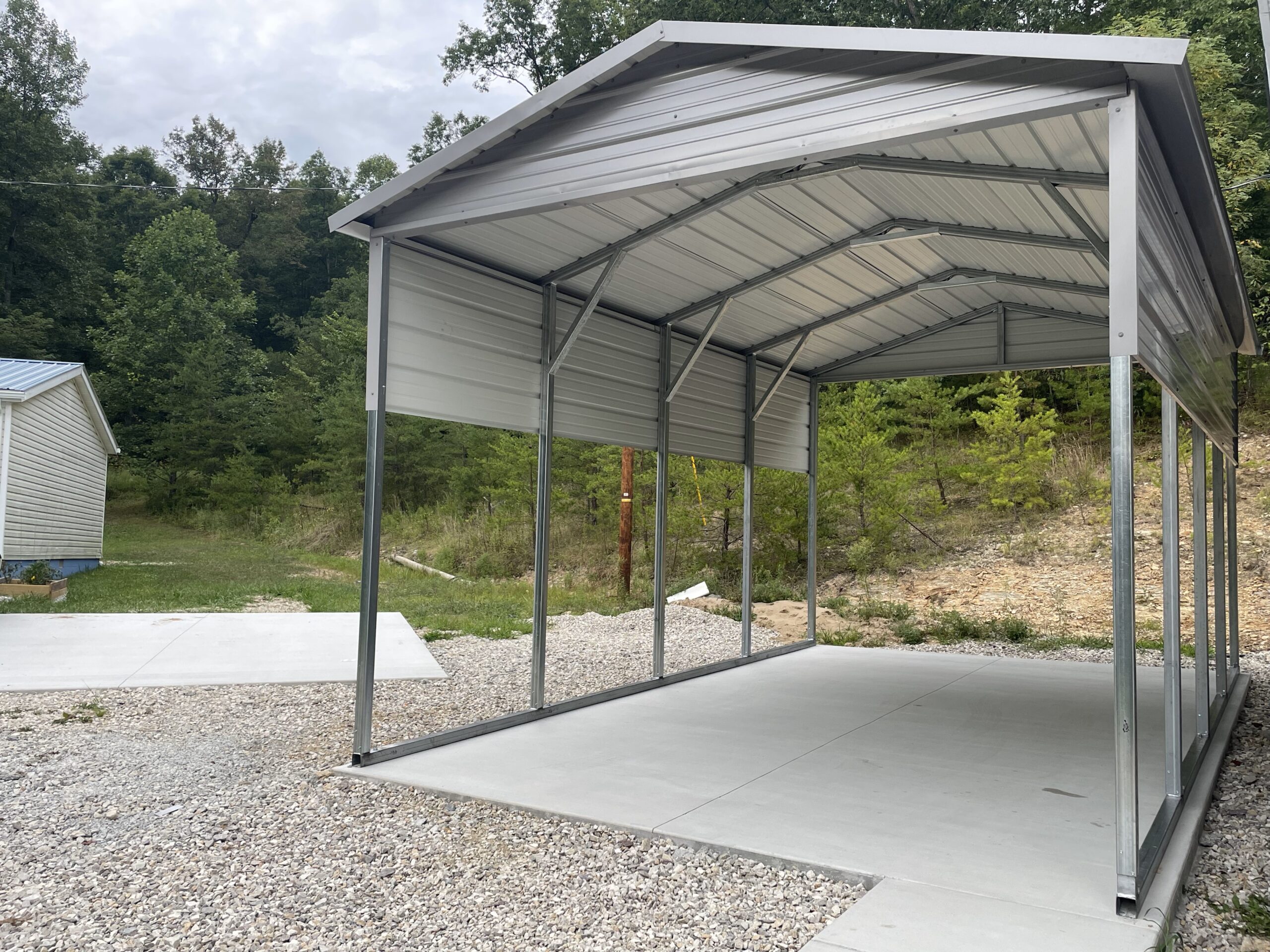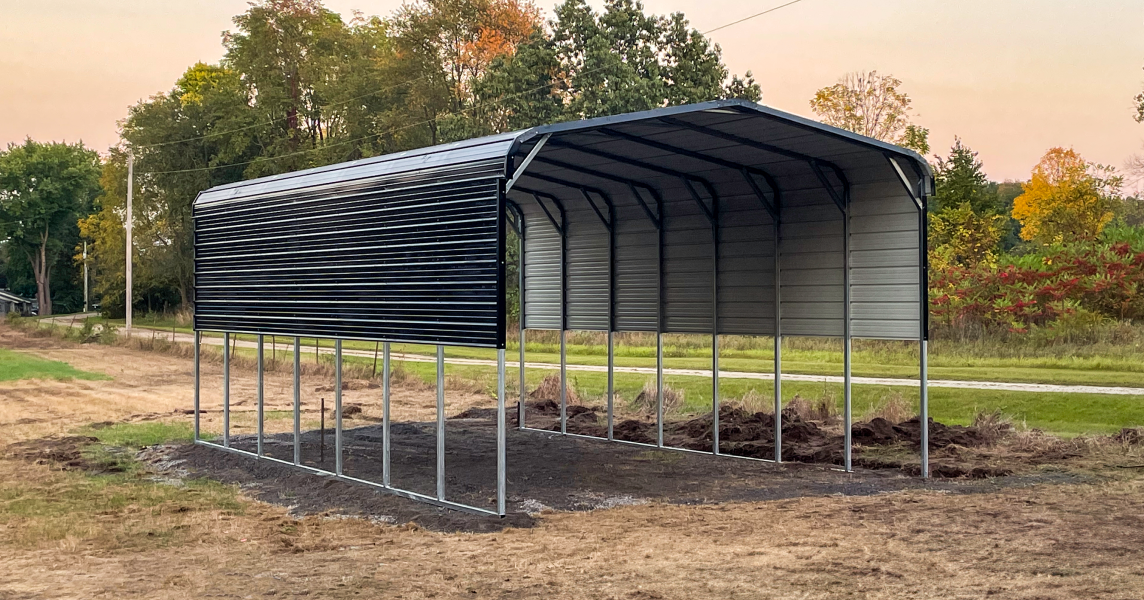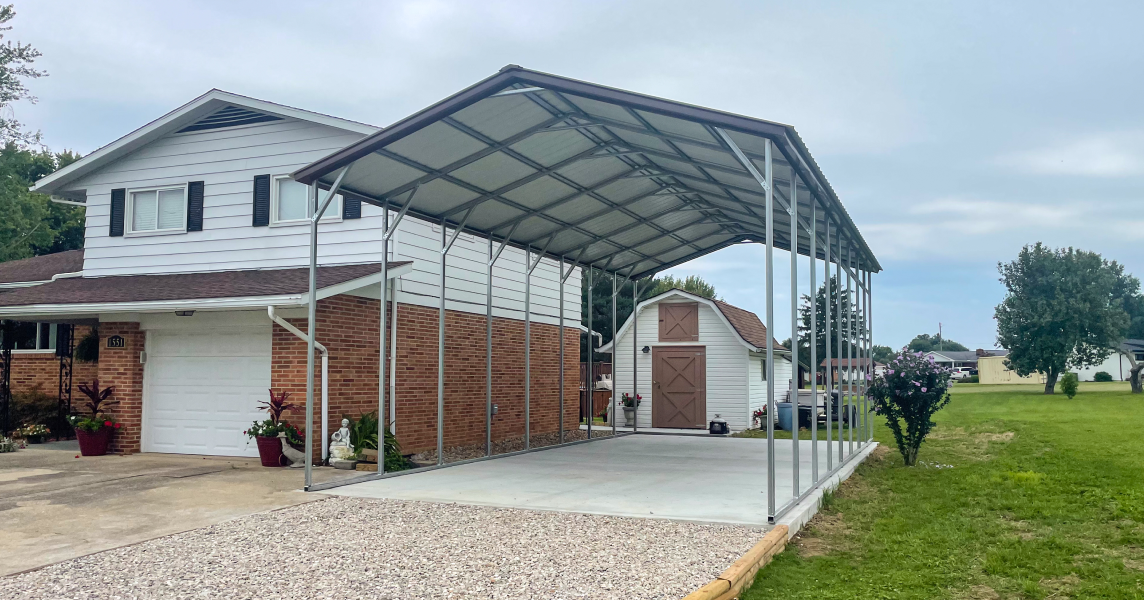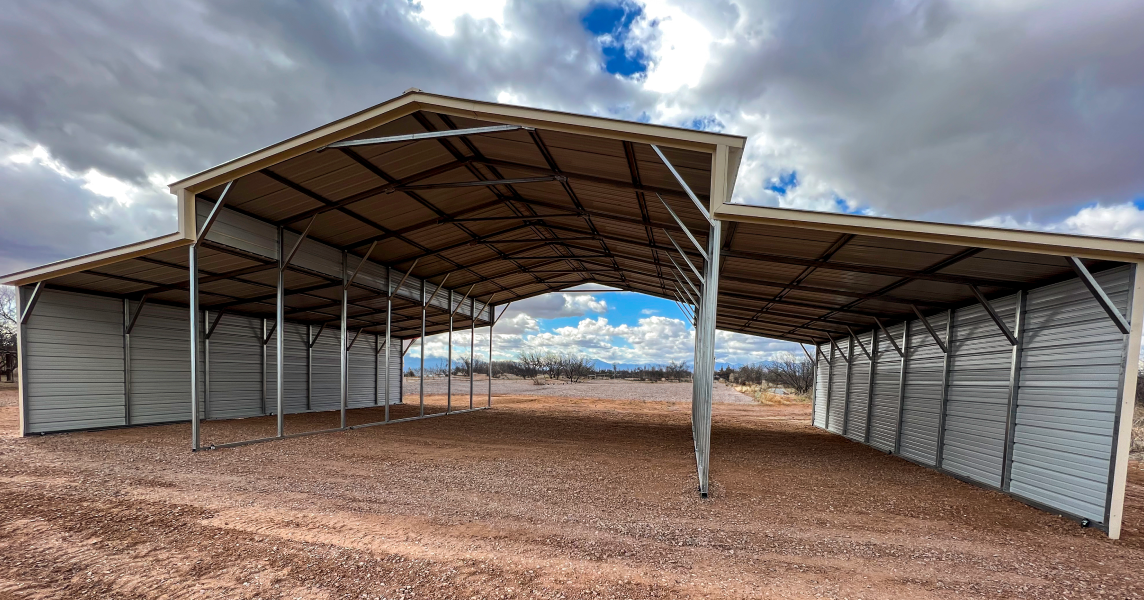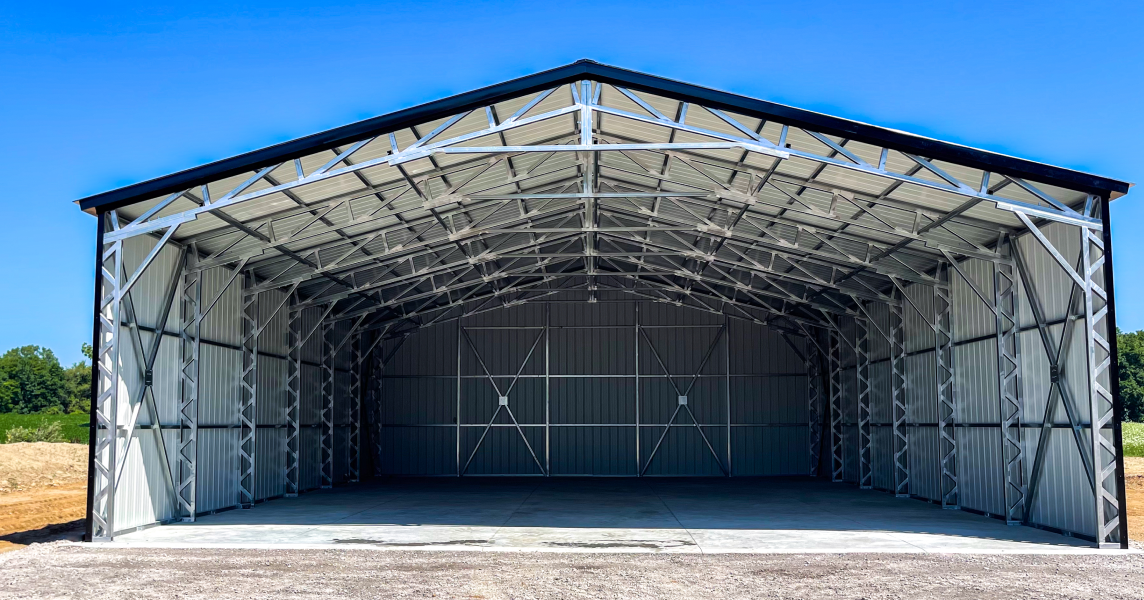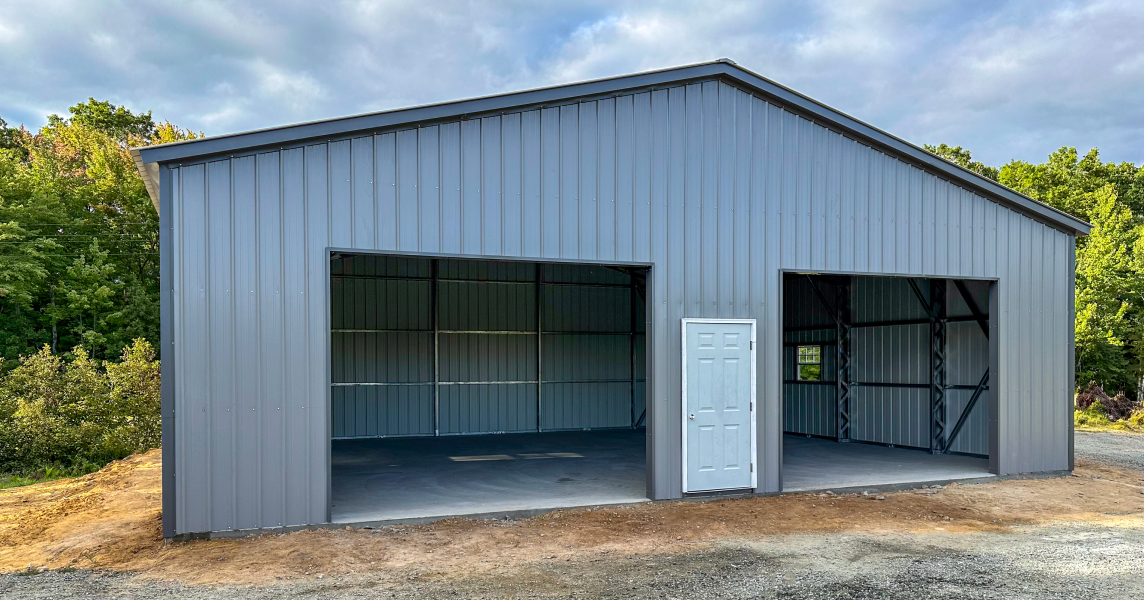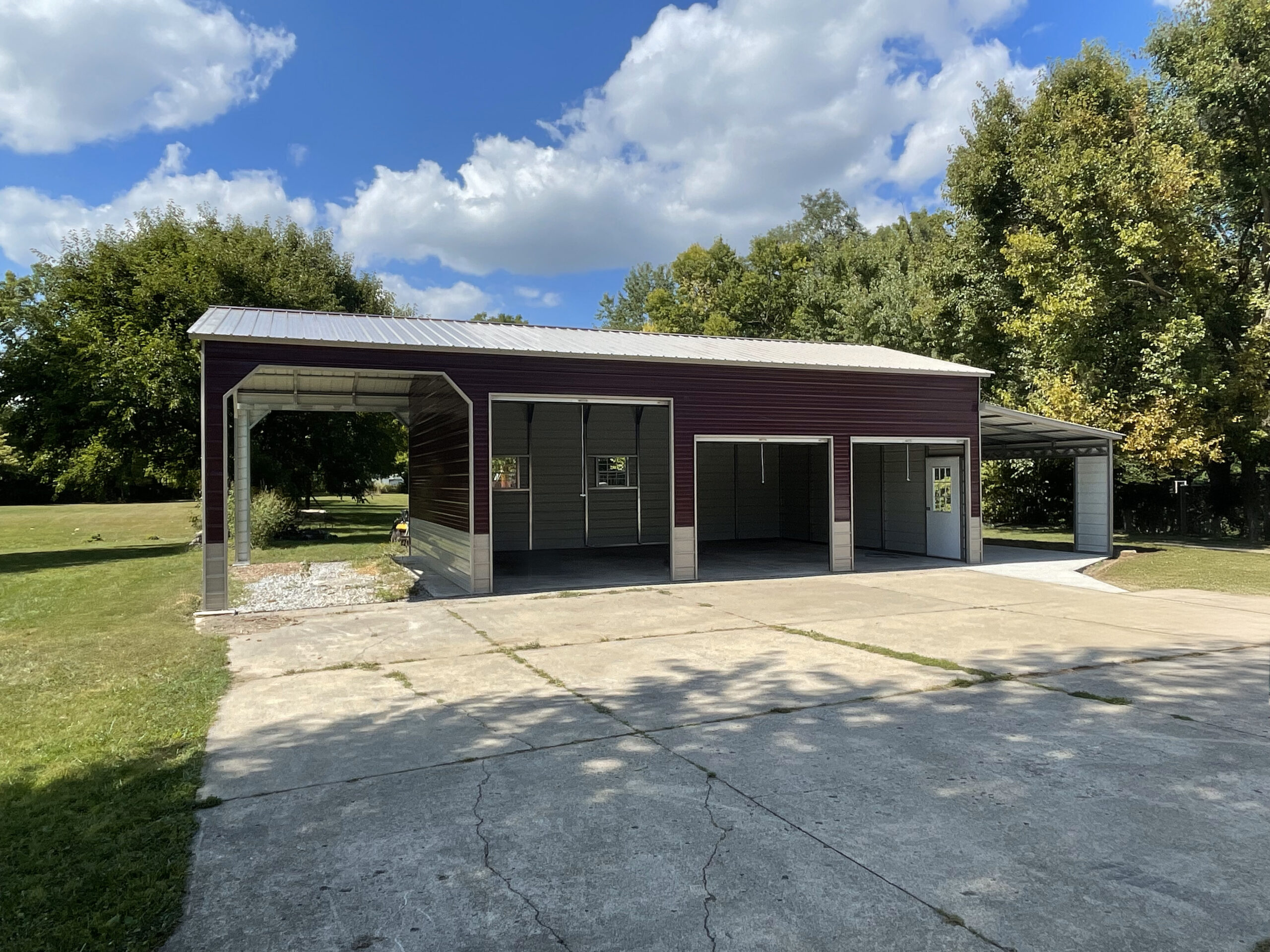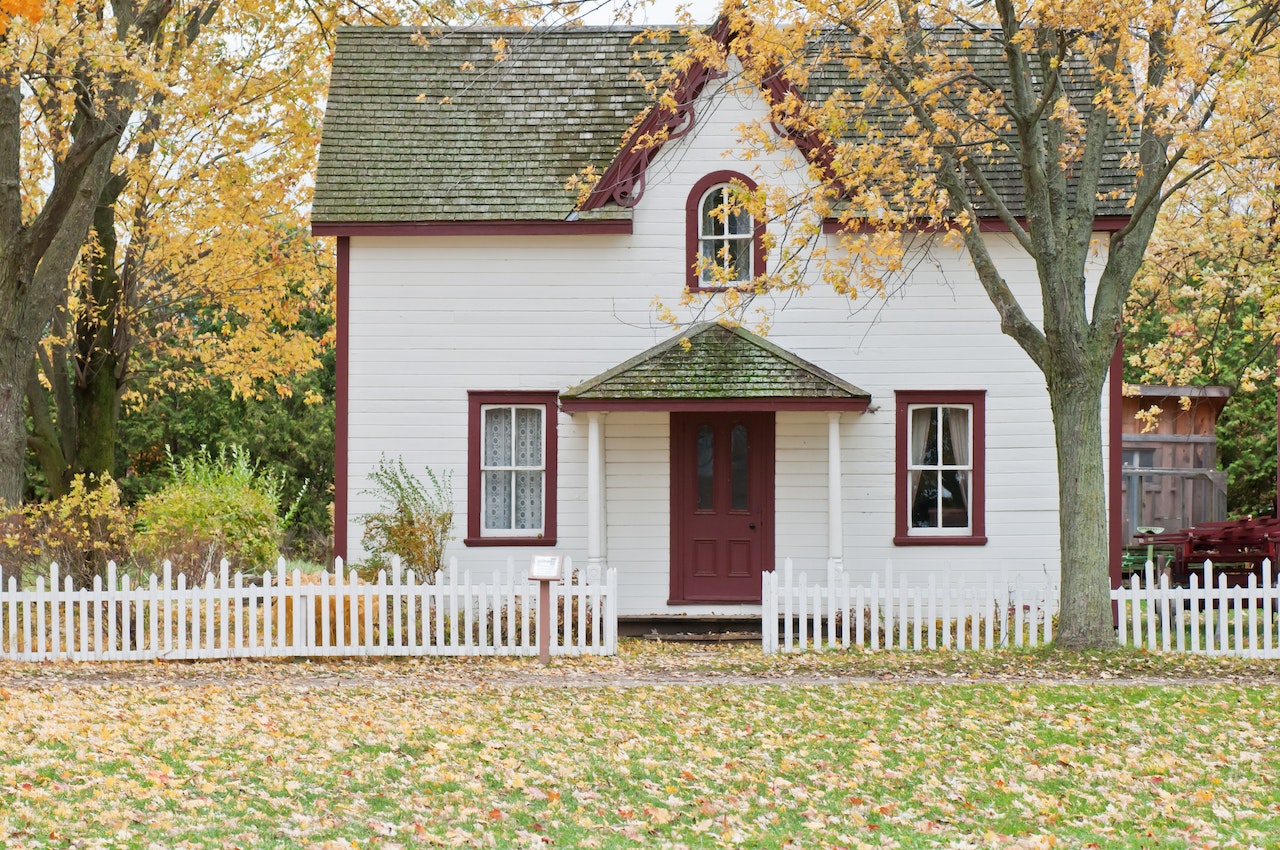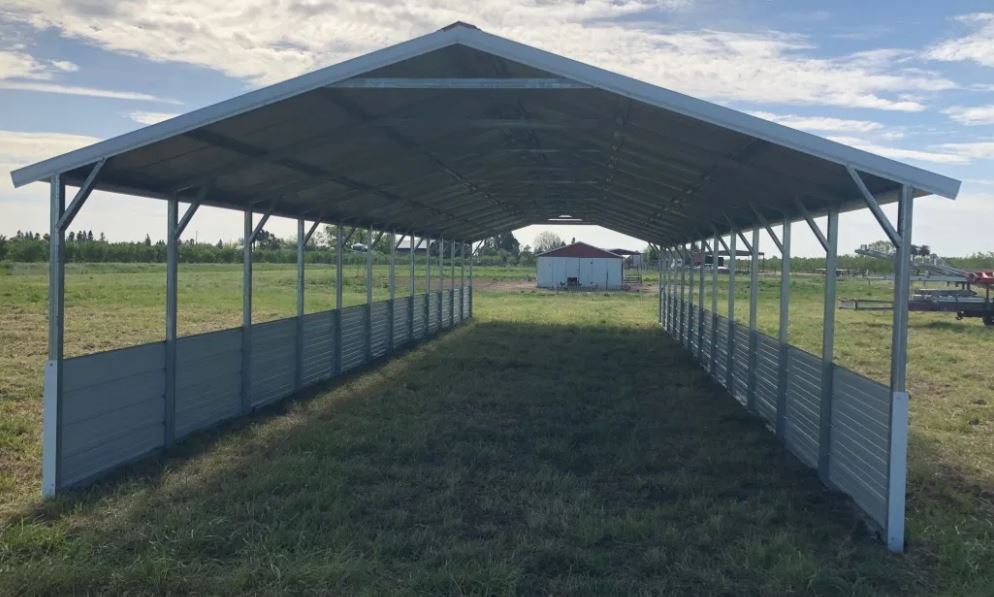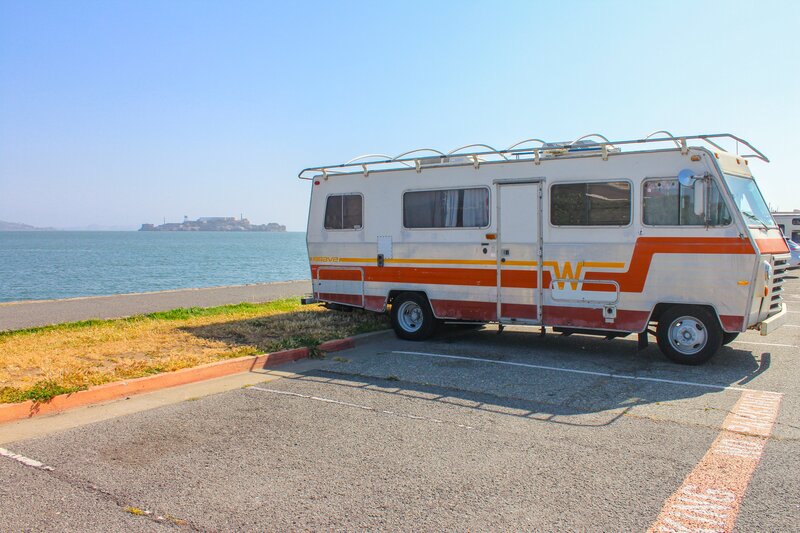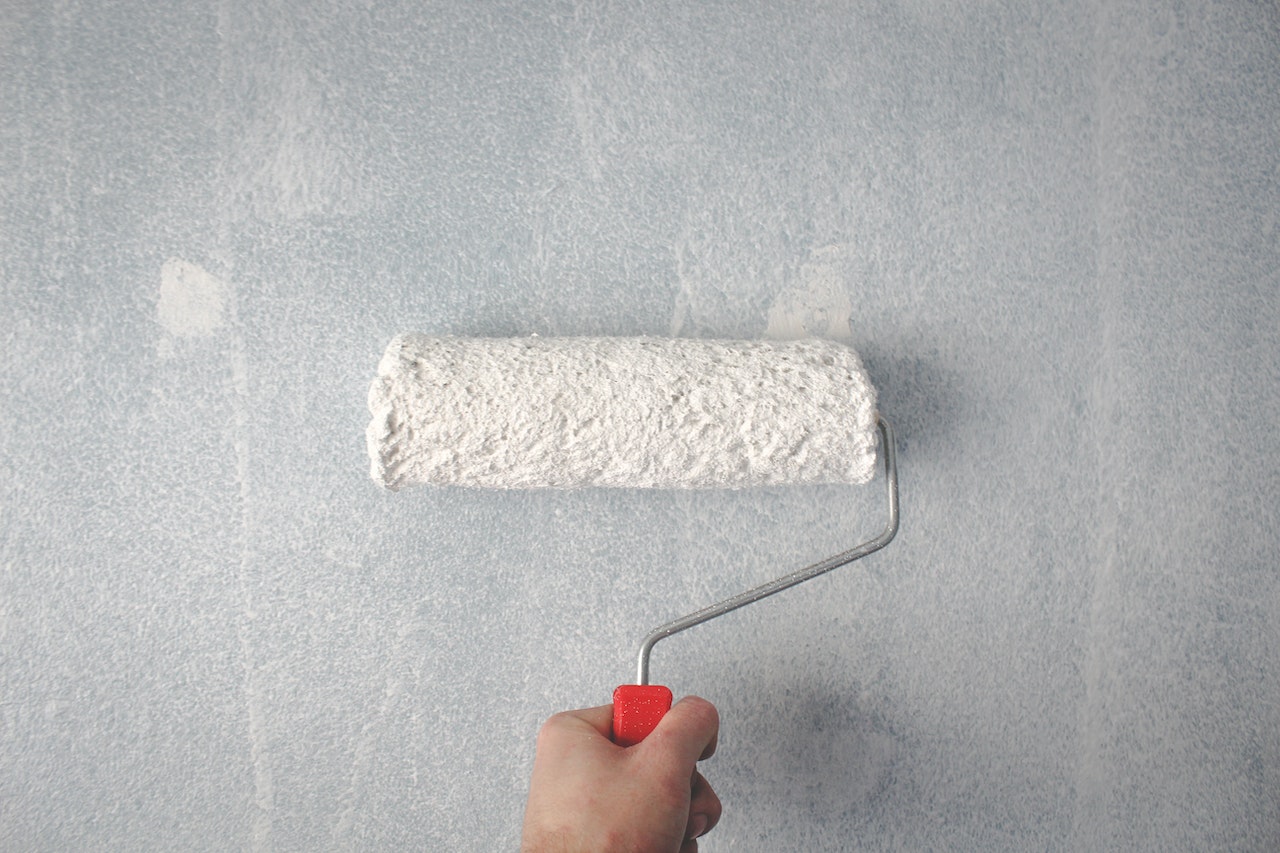
If you are picturing a metal storage building as a drab, boring gray box on your property, you need to take a fresh look at what can be accomplished with these structures. Through the use of creative design, along with some great paint, you can have a metal storage building that is as attractive as it is functional.
Fresh paint is the way to go if you have a worn-down old metal building that could use a new lease on life. In this post, we will take a closer look at paint for metal storage buildings. Painting metal doesn’t have to be complicated or difficult, but it does work a little differently than painting wood.
Of course, if you don’t yet have a metal storage building on your property, turn to American Carports, Inc. for help. By working with us, you can add a nice structure to your property that will be useful for many things, and there will be no need to paint it because we can customize it before it is installed. Get started today with our Build & Price tool, or contact us to learn more.
It Starts with Surface Prep
Just taking a can of paint out to your old metal storage building and rolling some won’t yield great results. The issue with painting directly over existing painted metal is that the surface will be too smooth to accept the new paint properly. Most likely, your new paint won’t adhere very well, won’t go on evenly, and will quickly peel away after it dries. If you want to get good results from this fresh paint job, you must take the time to prep the surface properly.
As a starting point, clean the entire structure with soap and water, much like you would wash a vehicle. With that job done, you can use some sandpaper to rough up the surface and prepare it to accept paint. You don’t want to be too aggressive with this step, so use light grit sandpaper and go over the surface lightly. Also, it’s a good idea to use a primer after you have sanded so you can be sure the coat of paint you apply will have the best possible chance to stick and look great.
Picking the Right Paint
It’s critical to pick out a paint that has been formulated for use on metal surfaces. Fortunately, these types of paints are easy enough to find, as recommended surface materials will be listed right on the can. If you visit a large home center, you can browse the paint section for a bit and find some products that are meant for metal. Alternatively, you could go to a specialty paint store, and the employees there can point you in the right direction.
For metal that lives outdoors, consider going with an oil-based paint. Applying oil-based paint can be a little trickier than water-based, but you’ll usually get a tougher finished product ready to stand up to the environment. Oil-based paint takes longer to dry than water-based varieties, so plan that drying time into your process.
Watch the Weather
Painting outside means paying close attention to the weather forecast. First and foremost, you want to make sure there is no threat of rain on the day you hope to paint. If rain is forecast – even just a little bit of rain – wait to do this project on another day. You’d hate to go through the trouble of applying a new coat of paint to the structure only to have a quick rainfall ruin your efforts before that paint has had time to dry. Also, extreme temperatures (in either direction) will make things more difficult. You want to look for a “just right” day with mild temperatures and dry skies.
Is It Time for a New Building?
While a fresh coat of paint is certainly the quickest solution, you might find as you get started on this project that you need a new building, not just a coat of paint. With a new structure, you can design it to make sure it fits perfectly in the space and serves your current needs – not whatever your needs were when the building was first constructed. Before you start painting, make sure that going ahead with a paint job is truly the best course of action.
We’re Here to Help
You can get great results when painting a metal storage building by picking out the right paint and taking your time with the project. To order a new building that will be beautifully painted when it arrives, contact American Carports, Inc. for more information about our products. We’d love to serve you!


